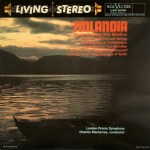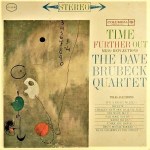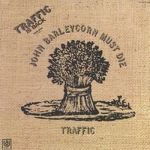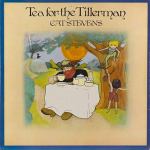More of the Music of Rod Stewart
In the listing for our 2010 Shootout Winner, we noted:
Having made a number of serious improvements to our system in the last few months, I can state categorically and without reservation that this copy of Never a Dull Moment achieved the best stereo sound I have ever heard in my life (outside of the live event of course). I’m still recovering from it.
[In 2022, of course this statement strikes me as way over the top. But I must have believed it when I wrote it.]
The credit must go to the engineering of Mike Bobak for the Demo Disc sound. We just finished our most comprehensive shootout ever for the album, culling the best sounding dozen from about twenty-five entrants, and this copy just plain kicked all their butts, earning our highest grade on side one (A+++).
Side one here is OFF THE CHARTS! No other side one could touch it. It’s got all the elements needed to make this music REALLY ROCK — stunning presence; super-punchy drums; deep, tight bass; and tons of life and energy.
The Sound
So many copies tend to be dull, veiled, thick and congested, but on this one you can separate out the various parts with ease and hear right INTO the music.
It’s also surprisingly airy, open, and spacious — not quite what you’d expect from a bluesy British rock album like this, right? But the engineers here managed to pull it off.
One of them was Glyn Johns (mis-spelled in the credits Glynn Johns), who’s only responsible for the first track on side one, True Blue. Naturally that happens to be one of the best sounding tracks on the whole album.
Side Two
We were thrilled when we dropped the needle on side two and heard BIG BASS and TONS of ENERGY just like this amazing side one.
Listen to the room around the drums on Angel — you can really hear the studio as well as the sound of the skins being beaten. On the same track, the meaty guitar in the left channel sounds mind-blowingly good.
With a little more top end, the kind that makes the glockenspiel in the right channel clear and present and harmonically correct, this copy would have been hard to beat on side two as well.
The story of our old shootout is what progress in audio in all about. As your stereo improves, some records should get better, some should get worse. It’s the nature of the beast for those of us who constantly make improvements to our playback and critically listen to records all day. And it all comes courtesy of the countless revolutions in audio that have been such a boon to audio over the last twenty years or so.
Want to find your own killer copy?
Consider taking our moderately helpful advice concerning the pressings that have been winning our Hot Stamper shootouts for years. Never a Dull Moment can only really come alive:
Of course it needs to be played loud. What classic British blues rock album doesn’t?
Furthermore, the best copies sound their best:

 More of the music of Jean Sibelius (1865-1957)
More of the music of Jean Sibelius (1865-1957)



 The Music of Tchaikovsky Available Now
The Music of Tchaikovsky Available Now More of the Music of Frank Zappa
More of the Music of Frank Zappa

